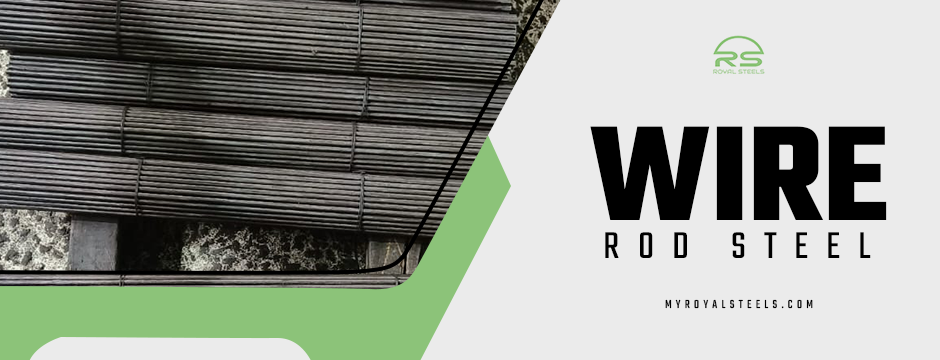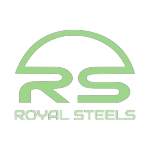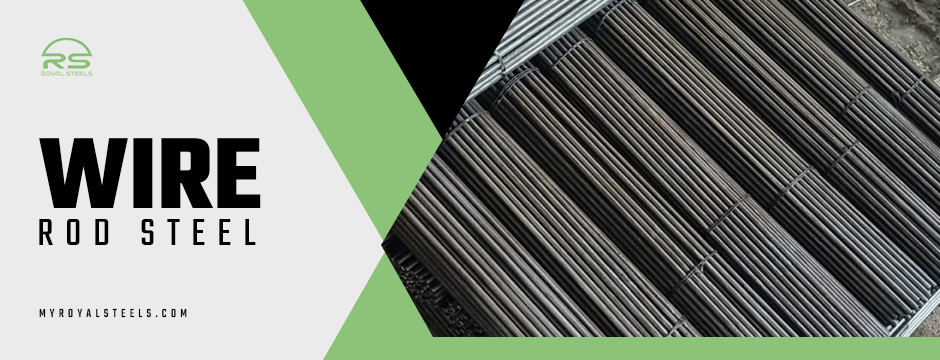In the world of modern construction and engineering, strength, flexibility, and reliability are paramount. From towering skyscrapers to intricate machinery, every structure and component relies on materials that can withstand intense pressure and perform consistently. Among the most critical materials used in these high-strength applications is wire rod steel. Often underrated by those outside the industry, wire rod steel plays a foundational role in various engineering sectors, thanks to its superior mechanical properties, adaptability, and cost-efficiency.
Wire rod steel is essentially a hot-rolled round steel product that’s further processed into wires, springs, cables, and structural reinforcements. Its applications stretch across industries such as civil engineering, automotive manufacturing, power transmission, heavy machinery, and infrastructure development. The versatility of wire rod steel lies in its ability to be formed into various shapes and sizes without compromising its tensile strength. This feature makes it indispensable for projects requiring both durability and precision.
Exceptional Strength-to-Weight Ratio
One of the primary reasons wire rod steel is favoured in engineering projects is its exceptional strength-to-weight ratio. This means that while the material remains relatively light, it can bear significant loads without deformation. This property is particularly crucial in projects where weight distribution and structural balance are critical, such as in bridges, high-rise buildings, and large industrial frameworks.
Wire rod steel is manufactured through controlled rolling and cooling processes, which refine its grain structure and increase its tensile strength. As a result, it can withstand both static and dynamic forces, making it suitable for demanding engineering applications where failure is not an option.
Superior Ductility and Flexibility
Engineering projects often require materials that can be shaped into various forms without compromising strength. Wire rod steel offers excellent ductility, allowing it to be drawn into wires or processed into reinforcement meshes, cables, or fasteners. This flexibility is crucial in modern engineering, where customised components are often needed for complex designs.
Whether it’s forming pre-stressed concrete tendons for bridges or manufacturing automotive springs, the ability to mould wire rod steel without cracking gives engineers greater freedom to innovate while maintaining structural integrity.
High Fatigue Resistance for Long-Term Durability
High-strength engineering projects often face repetitive stress loads over time. For example, suspension bridges experience continuous traffic-induced vibrations, while wind turbines undergo cyclic loading from wind forces. Wire rod steel’s high fatigue resistance ensures that structures can endure such repeated stresses without weakening or developing micro-fractures.
This durability is achieved through precision metallurgical control during production, which enhances the steel’s internal structure. As a result, components made from wire rod steel last longer, require less maintenance, and offer greater safety over their service life.
Corrosion Resistance and Surface Treatments
Many engineering structures are exposed to harsh environments — from marine conditions to chemical plants and open-air installations. Wire rod steel can be manufactured with alloying elements and specialised coatings that improve its corrosion resistance. Galvanisation, for instance, provides a protective zinc layer, while other surface treatments can offer resistance to rust, chemicals, and extreme temperatures.
This makes wire rod steel suitable for projects in coastal areas, energy infrastructure, and industrial facilities, where material degradation can be a significant safety concern.
Versatile Applications Across Industries
Wire rod steel’s adaptability makes it a backbone material in various sectors. Here are some prominent applications:
- Construction: Used for reinforcement bars, pre-stressed tendons, fencing, fasteners, and suspension cables.
- Automotive: Employed in springs, bolts, nuts, and other high-stress components.
- Energy & Power: Integral in the production of transmission lines, guy wires, and power grid infrastructure.
- Mechanical Engineering: Used in the manufacture of machinery parts, tools, and precision-engineered components.
- Infrastructure Projects: Plays a role in building railways, bridges, tunnels, and highways.
This wide range of uses highlights wire rod steel’s role as an indispensable element in modern development.

Cost-Effectiveness and Efficiency
Despite its superior properties, wire rod steel remains cost-effective, thanks to scalable production techniques and widespread availability. Its ability to be processed into multiple forms reduces waste and improves material utilisation in large-scale projects. Additionally, because wire rod steel components often require less maintenance and have longer lifespans, they contribute to significant long-term cost savings.
For engineering firms and construction companies, this balance between performance and affordability makes wire rod from the bright bar manufacturers in India an obvious choice for large infrastructure investments.
Supporting Sustainable Engineering
Sustainability is a growing priority in the engineering world. Wire rod steel is fully recyclable without loss of quality, making it a responsible choice for eco-conscious projects. Recycled steel can be repurposed efficiently, reducing the carbon footprint of manufacturing processes.
Moreover, because of its long service life and minimal maintenance requirements, wire rod steel contributes to lower resource consumption over time, aligning with green building standards and sustainable engineering practices.
Compliance with International Standards
Modern engineering projects must comply with strict quality and safety standards. Wire rod steel is produced following global specifications such as ASTM, DIN, and ISO, ensuring consistency in mechanical properties and performance. This compliance allows project managers to source wire rod steel confidently, knowing that it meets the structural demands of their designs.
Such standardisation also simplifies international collaboration on large infrastructure initiatives, where materials need to meet universal benchmarks.
End Notes
In high-strength engineering projects, the choice of material determines not just structural performance but also longevity, safety, and overall project success. Wire rod steel stands out as a versatile, durable, and economical material that can be adapted to a multitude of demanding applications — from massive bridge cables to finely engineered automotive springs.
For premium-quality wire rod steel and a wide range of steel products that meet international standards, visit Royal Steels — your trusted partner for high-performance steel solutions that power the future of engineering.

